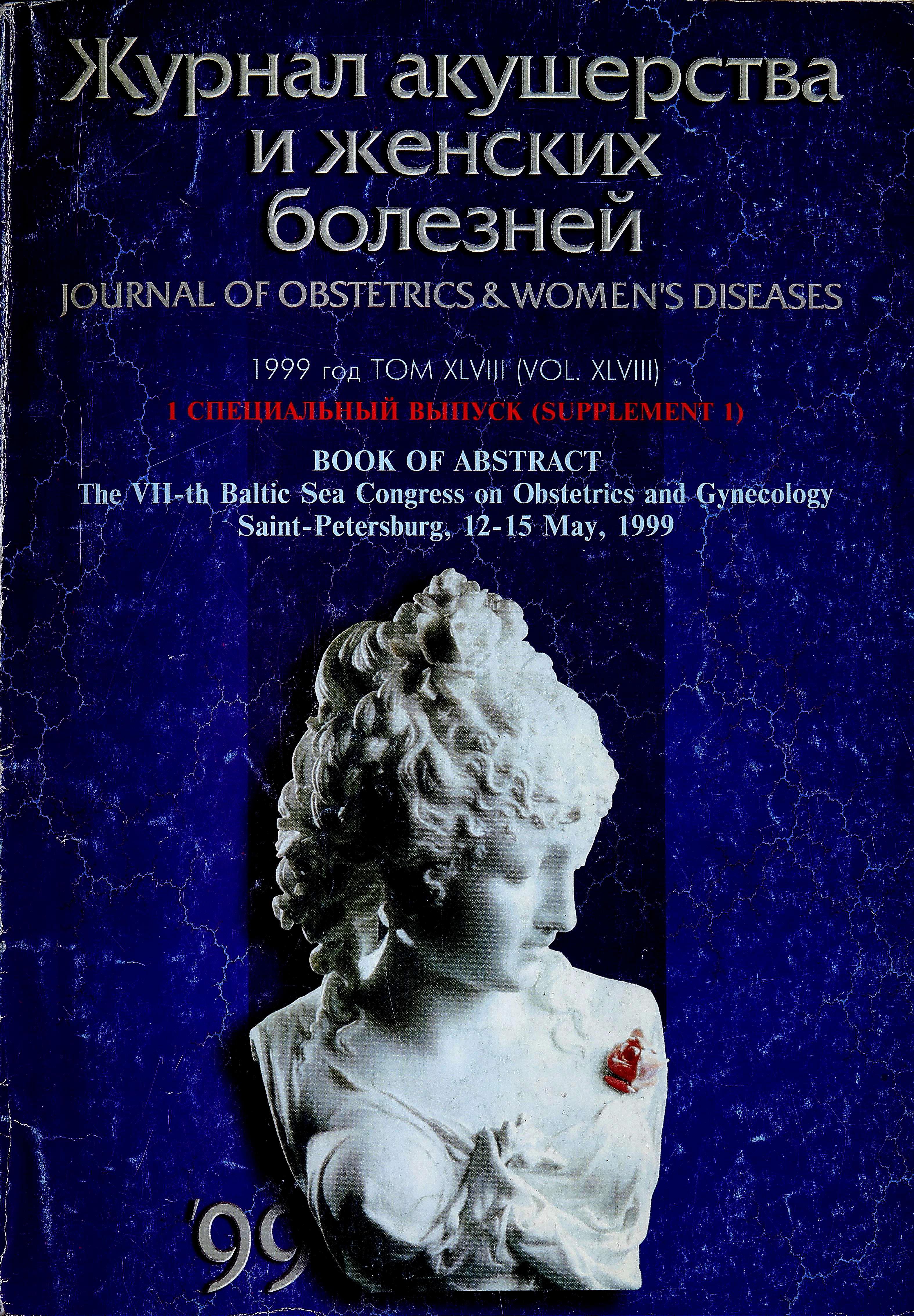Extraembryonic structures and perinatal complications
- Authors: Radzinskiy V.Y.1, Kondratjeva Y.N.1, Gagaev C.G.1, Orazmuradov A.A.1, Avramenko S.A.1
-
Affiliations:
- Peoples' Friendship University of Russia
- Issue: Vol 48, No 5S (1999)
- Pages: 128-128
- Section: Articles
- Submitted: 21.02.2022
- Accepted: 21.02.2022
- Published: 15.12.1999
- URL: https://journals.eco-vector.com/jowd/article/view/101354
- DOI: https://doi.org/10.17816/JOWD101354
- ID: 101354
Cite item
Full Text
Abstract
The pathology of extraembryonic structures (ES) (placental bed (PB), placenta, amniotic fluid (AF), umbilical cord (UC) and their influence on perinatal outcomes remains poorly understood, despite of the priority role they play in maintenance of fetoplacental system (FPS) homeostasis from nidation until delivery. The intensive study of placenta and its insufficiency (PI) in 70-80th was basically dedicated to investigation of its structure and function in II-III trimesters and has not revealed structural and metabolic features of interrelations ofphysiological and pathological changes of ES and its influence on maternal and fetal status. In this message the results of long-term investigations of adaptational and homeostatic characteristics of ES are submitted.
Full Text
The pathology of extraembryonic structures (ES) (placental bed (PB), placenta, amniotic fluid (AF), umbilical cord (UC) and their influence on perinatal outcomes remains poorly understood, despite of the priority role they play in maintenance of fetoplacental system (FPS) homeostasis from nidation until delivery. The intensive study of placenta and its insufficiency (PI) in 70-80th was basically dedicated to investigation of its structure and function in II-III trimesters and has not revealed structural and metabolic features of interrelations ofphysiological and pathological changes of ES and its influence on maternal and fetal status. In this message the results of long-term investigations of adaptational and homeostatic characteristics of ES are submitted. They had included ultrasound screening of 21840 pregnancies, based on mathematical and sonographical modelling; ascertainment of biochemical hormonal and immunological values of AF (242 samples); histomorphological analysis of PB, placenta and amniotic membranes (AM) with use of electronic microscope (118 cases), investigation of their relationship with FPS homeostasis, perspectives of pregnancy outcome prognosis and assessment of therapy effectiveness. Gross deviations in structure and function of the system PB-placenta-AF-fetus were revealed in pregnancies complicated with olygohidramnion. On the basis of the morphological analysis of PB and AM the common structural mechanisms leading to PI and reduction of AF volume were determined. Ultrasonic criteria are postulated for dynamic quantitative analysis of AF volume in normal pregnancies and those complicated with ES pathology. Signs of different forms of structural and functional insufficiency of PB, FM and UC are classified. Diagnostic and prognostic criteria are determined for assessment of ES status. The role of paraplacental exchange route in normalization of AF volume and possibility (through it) of influence on FPS homeostasis, perspective methods of PI treatment (due to ES pathology) are discussed.
About the authors
V. Y. Radzinskiy
Peoples' Friendship University of Russia
Author for correspondence.
Email: info@eco-vector.com
Russian Federation, Moscow
Y. N. Kondratjeva
Peoples' Friendship University of Russia
Email: info@eco-vector.com
Russian Federation, Moscow
Ch. G. Gagaev
Peoples' Friendship University of Russia
Email: info@eco-vector.com
Russian Federation, Moscow
A. A. Orazmuradov
Peoples' Friendship University of Russia
Email: info@eco-vector.com
Russian Federation, Moscow
S. A. Avramenko
Peoples' Friendship University of Russia
Email: info@eco-vector.com
Russian Federation, Moscow
References
Supplementary files







